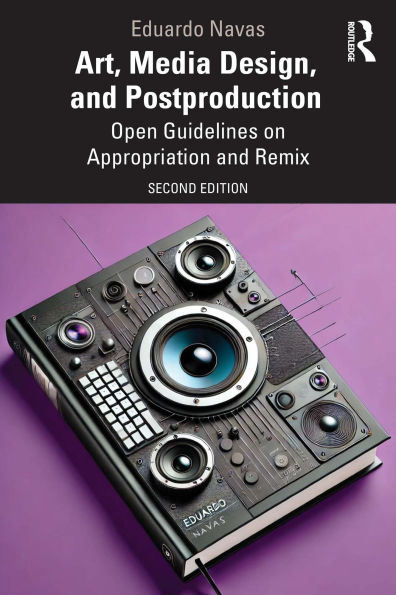Author Eduardo Navas divides his book into three parts: Media Production, Metaproduction, and Postproduction. The chapters that comprise the three parts each include an introduction, goals for guidelines of a studio-based project, which are complemented with an explanation of relevant history, as well as examples and case studies. Each set of guidelines is open-ended, enabling the reader to repurpose the instructional material according to their own methodologies and choice of medium. Navas also provides historical and theoretical context to encourage critical reflection on the effects of remix in the production of art and design.
Art, Media Design, and Postproduction: Open Guidelines on Appropriation and Remix
is the first book of guidelines to take into account the historical, theoretical, and practical context of remix as an interdisciplinary act. It is an essential read for those interested in remix studies and appropriation in art, design and media.Author Eduardo Navas divides his book into three parts: Media Production, Metaproduction, and Postproduction. The chapters that comprise the three parts each include an introduction, goals for guidelines of a studio-based project, which are complemented with an explanation of relevant history, as well as examples and case studies. Each set of guidelines is open-ended, enabling the reader to repurpose the instructional material according to their own methodologies and choice of medium. Navas also provides historical and theoretical context to encourage critical reflection on the effects of remix in the production of art and design.
Art, Media Design, and Postproduction: Open Guidelines on Appropriation and Remix
is the first book of guidelines to take into account the historical, theoretical, and practical context of remix as an interdisciplinary act. It is an essential read for those interested in remix studies and appropriation in art, design and media.
Art, Media Design, and Postproduction: Open Guidelines on Appropriation and Remix
344
Art, Media Design, and Postproduction: Open Guidelines on Appropriation and Remix
344Related collections and offers

Product Details
| ISBN-13: | 9781040342428 |
|---|---|
| Publisher: | Taylor & Francis |
| Publication date: | 05/12/2025 |
| Sold by: | Barnes & Noble |
| Format: | eBook |
| Pages: | 344 |
| File size: | 16 MB |
| Note: | This product may take a few minutes to download. |
